#Zahi Hawass
Note
i'm unsure what your opinion of zahi hawass is but i want you to know that he has a tiktok and he replied to someone spewing misinformation about ancient egypt by posting a picture of a fake diploma saying clown school graduate w/ clown music playing in the background
I have complex and largely negative feelings about that man but that is king shit behaviour. absolutely fucking iconic. 12/10 no notes we are united in our hatred of misinformation.
115 notes
·
View notes
Text
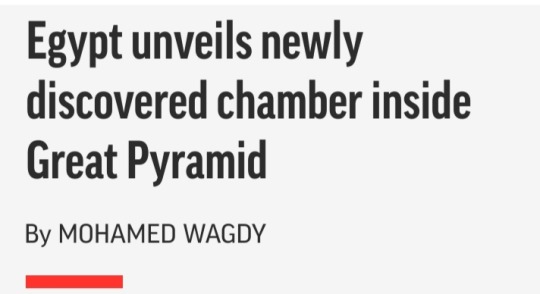

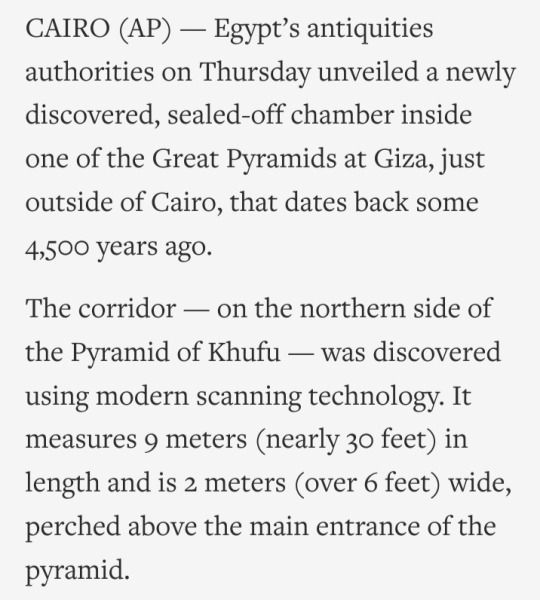
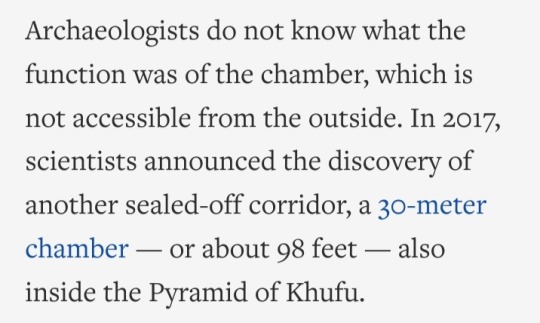

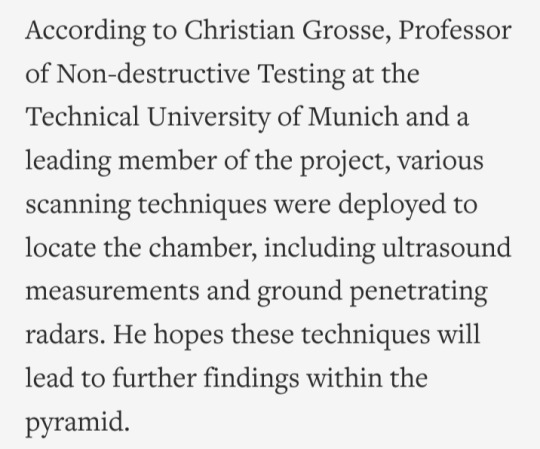
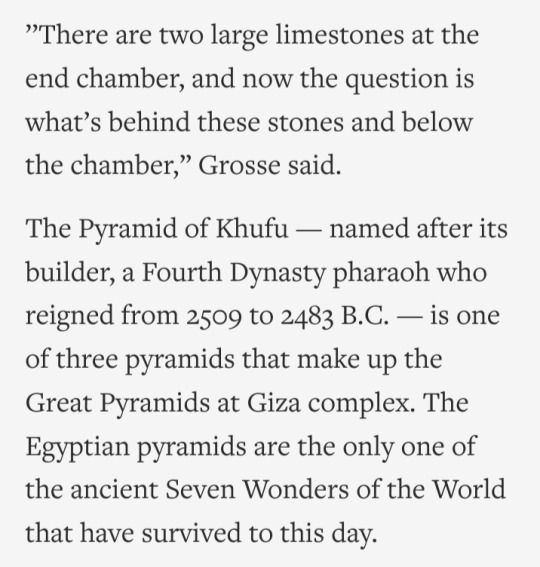


#Egypt#Pyramid of Khufu#Great Pyramid#Zahi Hawass#Ahmed Eissa#Scan Pyramids Project#Christian Grosse#Giza#pyramids#Ancient Egypt#Egyptian pyramids
65 notes
·
View notes
Photo
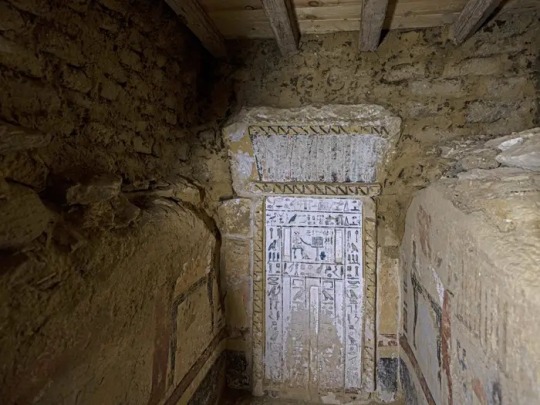
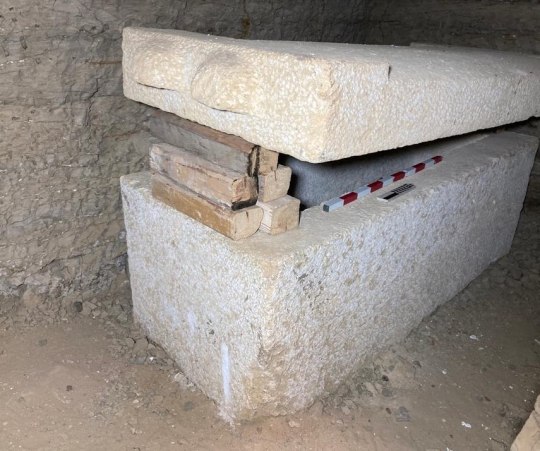
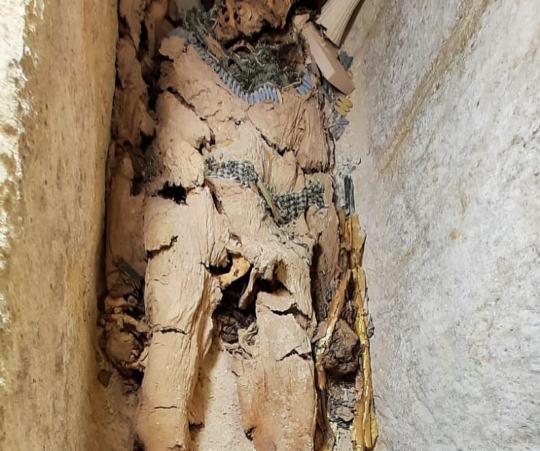
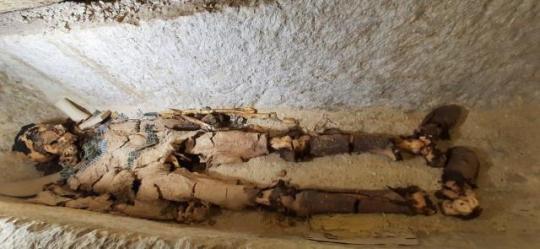
The Oldest Known Ancient Egyptian Mummy that is Covered with Gold Discovered
An ancient Egyptian mummy is the oldest covered with gold, but it's not the oldest ancient Egyptian mummy on record.
Archaeologists in Egypt have uncovered a series of tombs dating back around 4,300 years at Saqqara, including a sarcophagus holding the oldest known ancient Egyptian mummy that is covered with gold.
The record-breaking tomb had a sealed sarcophagus containing the mummy of a man that a hieroglyphic inscription identifies as Hekashepes, and whose remains were found covered with gold.
"When the sarcophagus was examined, it was found to be completely sealed with mortar, just as the ancient Egyptians had left it 4300 years ago. When the lid was raised, we found the mummy of a man covered with gold leaf," the team said in a statement posted on the Facebook page of Zahi Hawass, a former minister of antiquities who led the team that made the discoveries.
However, while other news outlets are reporting that this is the oldest Egyptian mummy known to archaeologists, that's not the case. Rather, "This mummy is the oldest complete mummy covered with gold," Hawass said in an email.
Many Egyptologists agree Egypt became unified around 3100 B.C., when the pharaonic state started. However, humans lived in the region as far back as 400,000 years ago. The oldest embalmed mummy in Egypt predates the pharaohs; the remains of a man who was placed in a fetal pose about 6,000 years ago. Meanwhile, the oldest known mummy in the world may be the 8,000-year-old remains of a man found in Portugal.
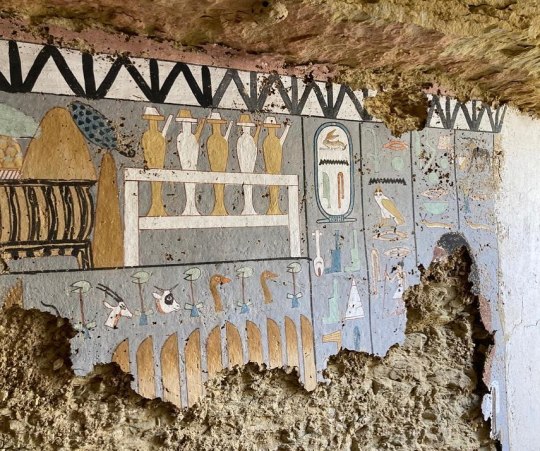

There is little information about Hekashepes, but it appears that "he was wealthy," Hawass said. Hekashepes' mummy was mummified using artificial methods, is intact and is covered with gold. There are older ancient Egyptian mummies — such as several mummies that date back more than 5,000 years at the site of Gebelein, about 25 miles (40 kilometers) south of ancient Thebes (modern-day Luxor) — but those are not covered with gold.
According to images posted online of Hekashepes' remains, it appears that his mummy is wearing clothes and doesn't have bandages, Francesco Tiradritti, an Egyptology professor at the Kore University of Enna in Italy who was not involved with these excavations, said in an email. The deceased seems like he was buried wearing a tunic with a belt and large necklace. This may be an attempt "to preserve as much as the living appearance of the deceased," Triadritti said, something that might shine light on religious beliefs at the time this man died.
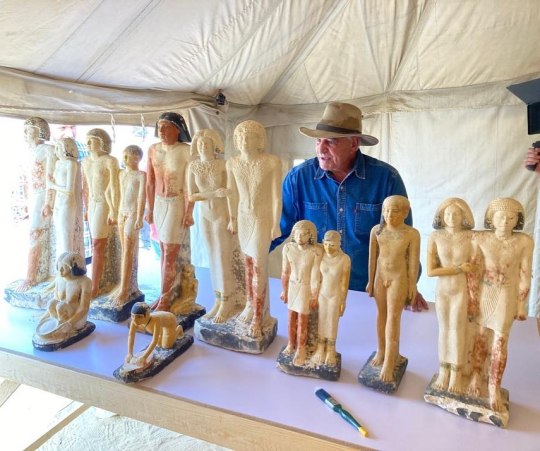
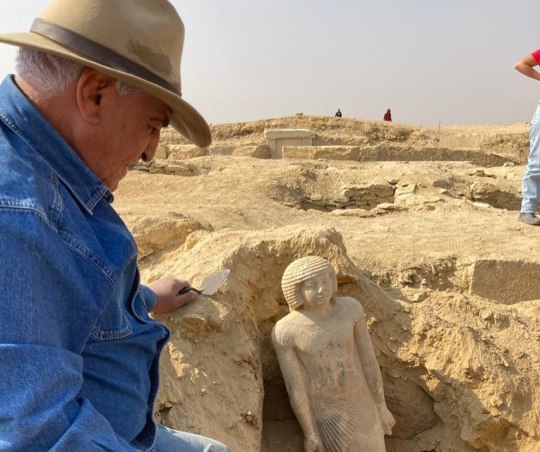
Tomb with paintings
Another important tomb belongs to a man named "Khnumdjedef" who was an "inspector of the officials," who served the pharaoh Unas (ruled circa 2353 B.C. to 2323 B.C.), according to hieroglyphic inscriptions found in the tomb. His tomb was decorated with wall paintings depicting "scenes of daily life," the statement said. One painting depicts five jars lined up on top of what looks like a table.
From a released photo, it appears that some of the paintings were drawn with "elongated proportions," Tiradritti said. Paintings with elongated proportions became popular long after Khnumdjedef lived, during the First Intermediate Period (circa 2150 B.C. to 2030 B.C.), Tiradritti said. During the First Intermediate Period, a transitional time between the Old Kingdom and the Middle Kingdom, the region experienced a major drought, the central government in Egypt collapsed and the political structure changed.
The newly found paintings "are interesting to understand the evolution of [Egyptian art]," Tiradritti said.
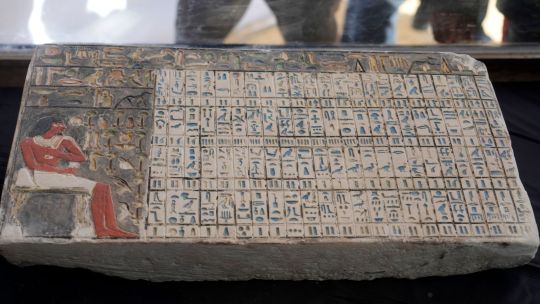
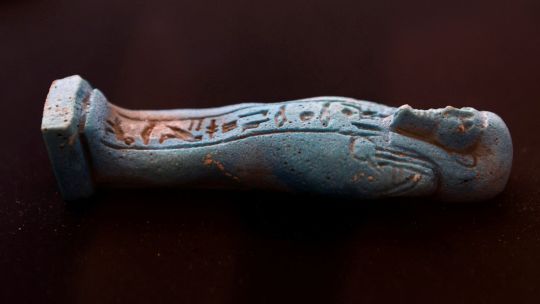

More tombs
Another tomb found in the cemetery belonged to an official named "Meri," whose hieroglyphic inscriptions say held a number of titles, including "keeper of the secrets" and "assistant of the great leader of the palace."
Another tomb belongs to a priest, whose name may have been "Messi," alongside his wife. It contains nine statues, some of which represent servants and one that represents the priest and his wife.
Additionally, the archaeologists found a shaft 33 feet (10 meters) deep that had a stone sarcophagus belonging to a man named "Fetek" at the bottom. He was buried along with three stone statues depicting him as well as an offering table.
Royal transition
From the information released so far, "it looks like the Egyptian mission found a necropolis that can be related to the pyramid of [Unas] and his cult," Tiradritti said. Unas was the last king of the fifth dynasty and it's possible that the newly found tomb may shed light on the transition between the fifth and sixth dynasties of Egypt, Tiradritti said.
After Unas died, a pharaoh named Teti (circa 2323 B.C. to 2291 B.C.), who was not a son of Unas and may have married into the royal family, came to the throne, starting the sixth dynasty. "The reasons for a changing in the royal line is still only a matter of guess," Tiradritti said. The tombs may also help understand Egypt's economy at this time, Tiradritti added, noting that Egyptologists usually see this as being a time of economic decline for Egypt.
By Owen Jarus.
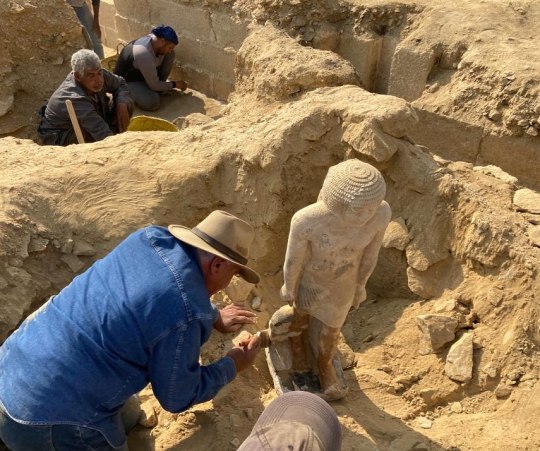
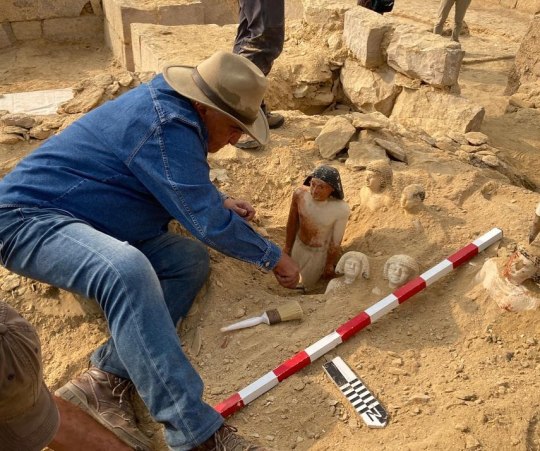
#The Oldest Known Ancient Egyptian Mummy that is Covered with Gold Discovered#Saqqara#Hekashepes#Zahi Hawass#archeology#archeolgst#ancient mummy#ancient grave#3ancient tomb#ancient artifacts#history#history news#ancient history#ancient culture#ancient civilizations#ancient egypt#egyptian history
60 notes
·
View notes
Text
#Cleopatra#Cleopatra vii#ptolemaic dynasty#ancient egypt#egyptology#zahi hawass#cleopatra was greek: deal with it#some excellent points in here#say what you may about hawass he knows his shit
23 notes
·
View notes
Text
One of the most famous—and famously outspoken—Egyptologists is Hawass, Egypt’s former minister of antiquities. For decades, he has worked to return a number of high-profile Egyptian artifacts to his country, including the Rosetta Stone (housed at the British Museum), the Dendera Zodiac (in the Louvre) and the bust of Nefertiti (in the Neues Museum). With the opening of the GEM imminent, Hawass in October launched an online petition asking these European museums to send the Egyptian treasures back home. So far, the petition has garnered more than 130,000 signatures.
“These are our monuments,” Hawass says. “The Rosetta Stone is the icon of our Egyptian identity. Without the Rosetta Stone, there is no archaeology of Egypt. It’s really sad to see in the [Dendera] temple a replica of the zodiac, and the original is in France.”
In September, a group of Egyptian archaeologists launched a separate petition similarly seeking to return the Rosetta Stone. Called Repatriate Rashid, the campaign demands that Egypt’s prime minister submit an official request to the British Museum. Complicating both repatriation pushes is the fact that the London institution is governed by an act of British Parliament expressly prohibiting the return of artifacts unless they are “duplicates” or “unfit to be retained in the collections of the museum.” Even in other instances when the museum wanted to return objects, court rulings and strict policies have prevented it from doing so.
While some key ancient artifacts remain abroad, Egyptian officials have had considerable luck in securing others’ return.
“Egypt is one of the countries that’s had the most consistent, driven repatriation effort,” says Alice Procter, a historian of material culture and the author of The Whole Picture: The Colonial Story of the Art in Our Museums and Why We Need to Talk About It. “The Egyptian government has been largely pretty successful in getting objects returned, and that’s partially due to the fact that so many pieces have been taken illegally in a very easily documented way.”
Many of these recently returned, illegally trafficked artifacts were looted in the chaos of the 2011 Arab Spring and sold to museums like the Metropolitan Museum of Art in New York City. Following international investigations, the Met has sent dozens of pieces back to Egypt, including the golden coffin of a high-ranking priest, which is now on display at the NMEC. In May, French prosecutors charged the former president of the Louvre, Jean-Luc Martinez, with complicity in fraud and money laundering linked to Egyptian antiquities purchased by the Louvre Abu Dhabi. The court’s decision is expected in February.
“Egypt has put in every possible effort to try to repatriate its objects,” says Ahmed Issa, Egypt’s newly appointed tourism minister. “But we’re also 100 percent committed to all the laws. Every piece that has left Egypt lawfully is owned by the person who owns it. But every piece that has left Egypt unlawfully, we’re going to exert every possible effort to return that piece to Egypt.”
— Who Gets to Tell the Story of Ancient Egypt?
#lauren keith#who gets to tell the story of ancient egypt?#history#archaeology#museums#colonialism#arab spring#egypt#ancient egypt#usa#france#united arab emirates#zahi hawass#alice proctor#jean-luc martinez#ahmed issa#british museum#neues museum#metropolitan museum of art#louvre#louvre abu dhabi#rosetta stone#dendera zodiac#nefertiti bust
7 notes
·
View notes
Text
The most famous Egyptologist in the world, Dr. Zahi Hawass, has proclaimed that he thinks he’s found Nefertiti’s mummy. But only DNA testing can reveal the truth.
52 notes
·
View notes
Text


Egyptologist Zahi Hawass, aging nicely into his current self.
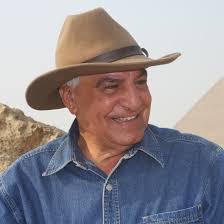
9 notes
·
View notes
Text
Zahi Hawass on the Osiris Shaft of Giza and Herodotus’ account of Cheops’ burial
The Osiris Shaft at Giza
Zahi Hawass, Tuesday 3 Mar 2020
Zahi Hawass describes the challenges of excavating the water-filled Osiris Shaft on the Giza Plateau, the burial place of the ancient Egyptian Pharaoh Cheops

Osiris
According to the popular ancient Egyptian belief, the god of the underworld in ancient Egypt was Osiris, who had been saved by his wife Isis from his evil brother Seth, who took on a “devil” role everywhere, even when the world was created.
In the ancient Egyptian story, Seth held a banquet and made a beautiful coffin that the ancient Egyptians appreciated. He announced that anyone who fitted inside the coffin could claim it as his own. Osiris tried, and Seth closed the coffin in on him and tossed it into the sea. The coffin floated to Lebanon on the sea and became a pillar in the palace of the king of Byblos. Isis then searched for her brother and husband, and she even worked as a servant in the palace of the king to do so. As a result, she was able to bring the pillar back to Egypt, where she hid Osiris’ body.
Seth was still keen on making trouble, and after finding the body, he cut Osiris into 14 pieces, which he threw all over Egypt. Isis searched all over the country for these pieces and was able to collect the pieces of her husband in order to bring him back to life. The only missing piece was Osiris’s phallus. There is a beautiful scene on the wall of the Temple of Seti I at Abydos, the place that was said to contain Osiris’s head and the birthplace of his son by Isis Horus. In this scene, Isis is shown flying in a shape of a kite above the body of Osiris and restoring his phallus, and it was in this way that she and Osiris were able to conceive Horus, whom she raised. Horus later took revenge on his uncle and eventually became king of Egypt.
The 14 locations of Osiris’ body were called pr-wsir in ancient Egyptian, meaning the “palace of Osiris”. The Greeks used the word Busiris, and in Arabic it came to be known as Abousir. One of my own great discoveries at Giza was the “Osiris Shaft” that has become a fascinating site for many people who obtain special permission to visit it on the payment of a fee. In ancient times, people used the water-filled shaft for swimming, and even to the present day many people, including archaeologists, have entered the shaft. For centuries, however, the importance of the Osiris Shaft escaped even the most learned scholars.
This water shaft has become the stuff of legend and Internet rumour. It opens in the causeway linking the Sphinx to the Second Pyramid and descends in several places to a depth of nearly 100 feet below the plateau. It received its name from the crystal-clear water that fills its bottom chamber. This unfinished water-filled cavern is entered from a higher chamber that contains niches filled with granite stone coffins (sarcophagi). One of the empty niches contains a shaft in its floor that leads to the flooded corridor. Wading into the darkness, one can hear the echoes of ground water dripping from the rock walls.
I decided to investigate this shaft. Excavation of the second level revealed six rooms cut into the rock, with these containing two granite sarcophagi, pottery, and bones. Analysis of these dated this level to the Late Period or about 500 BCE. The last level was about 82 feet underground and was completely filled with water. We stayed for two months draining the water from the shaft and working inside it, and I felt I might end up blind and deaf from all the dust, mud, and noise of the water. This was the most difficult excavation I have ever been involved with.
After the excavation had been completed, I looked down into the water and saw the remains of four pillars surrounded by a wall. Inside them was part of a large, granite sarcophagus with the lid off. This discovery reflected the words of the ancient Greek historian Herodotus when he said that king Cheops, the builder of the Great Pyramid, was buried inside a granite sarcophagus and there was water near his Pyramid. People have always wondered about this, but no one had ever discovered the exact location. Even Herodotus admitted that he had never seen the burial with his own eyes because he had not been able to go down the shaft. He must have based his writing on the words of guides.
I made my second discovery from this excavation after moving the lid of the sarcophagus. I found that the configuration of the architectural features of this chamber resembled the hieroglyphic word pr, meaning house. It is known that the Giza Plateau was called nb wsir nb restaw, or the “the house of Osiris, Lord of Rastaw”. The latter refers to the underground tunnels, and most likely the name of the plateau reflects the tunnels inside the Osiris Shaft. The final chamber we found was most likely a symbolic tomb for the god Osiris, who was believed to control the underground tunnels, the tombs of the kings, and all those buried under the ground.
In the Late Period, the ancient Egyptians cut a tunnel about six metres long on the west wall of the Shaft. We sent a boy through the tunnel to explore, only to find that it was closed off and did not lead to any more chambers. To derive the date of the shaft, a boy was also lowered into the water-filled tomb on a rope to collect artifacts. From the objects retrieved, we dated the shaft to the New Kingdom or about 1550 BCE.
*A version of this article appears in print in the 5 March, 2020 edition of Al-Ahram Weekly

Zahi Hawass is Egyptian leading Egyptologist and administrator
Source: https://english.ahram.org.eg/NewsContent/50/1207/364640/AlAhram-Weekly/Heritage/The-Osiris-Shaft--at-Giza.aspx

The second level of the Osirion at Giza showing a granite sarcophagus inside a niche (left)

The third level of the “Osirion”.
Source of the pictures: https://www.guardians.net/hawass/osiris1.htm
Many in the Egyptological community criticize Hawass for self-promotion and authoritarian practices. I have criticized him recently in my blog for his rather outlandish claims that the Pyramids were bult by “free workers” or even by... volunteers. However, no one can refuse that he is a very important Egyptologist, with important contributions to his discipline. And this article of his is very interesting (moreover, it shows that Herodotus’ information on Egypt is, despite all the objective and subjective obstacles he met there, often accurate and useful).
2 notes
·
View notes
Photo

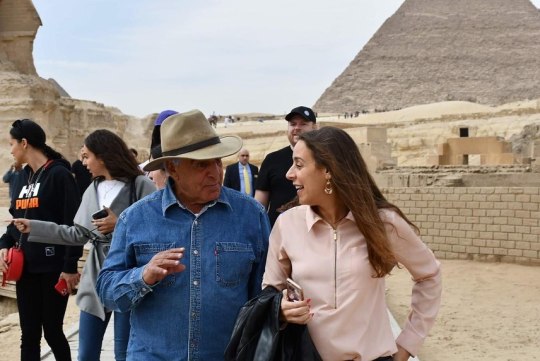
nadine_abdelghaffar.official
8 notes
·
View notes
Text
I emotionally imprinted on Zahi Hawass as a small child and now I am obsessed with Moon Knight and have an anthropology degree.
Honestly don't know why I'm surprised
#zahi hawass#ancient egypt#moon knight#anthropology#i am way to obsessed for my own good#i play spot the egyptologist in documentaries
4 notes
·
View notes
Text
Três portas misteriosas dentro da Grande Pirâmide de Gizé serão abertas
Um famoso arqueólogo revelou a data em que explorará três portas misteriosas dentro da Grande Pirâmide e isso será divulgado em breve.
Zahi Hawass mostra localização de uma das misteriosas portas dentro da grande pirâmde.
Zahi Hawass, ex-Ministro de Estado para Assuntos de Antiguidades do Egito, disse ao The U.S. Sun sobre sua próxima missão para descobrir aonde as portas levam.
O famoso…
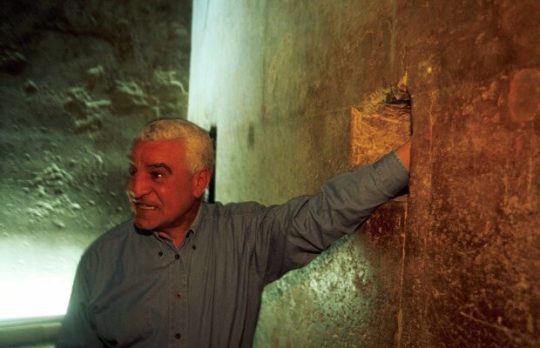
View On WordPress
0 notes
Text
Progetto ScanPyramids: scoperto corridoio che potrebbe portare alla sepoltura di Cheope
Su queste pagine abbiamo già parlato del progetto ScanPyramids, inaugurato nel 2015. Parliamo di una cooperazione internazionale che si muove sotto l’egida dell’Università del Cairo che ha lo scopo di analizzare l’interno della grande piramide di Giza. Si suppone sia stata costruita negli anni in cui regnò il faraone Cheope, vale a dire tra il 2.609 e il 2.584 avanti Cristo. Parliamo di uno dei…

View On WordPress
#Antico egitto#archeologia#Cheope#Egitto#piramide#piramide di cheope zed#piramide di Giza#piramidi#piramidi Egitto#ScanPyramids#zahi hawass
0 notes
Text
New Excavation in Egypt
New Excavation in Egypt Unearths Exciting Discovery
A new excavation in Egypt has come out with dozens of new discoveries, announced the African country on Thursday.
The excavation took over a year, and was headed by Zahi Hawass, Egypt’s most renowned archaeologist. He was personally on site when one of the discoveries, an undisturbed tomb of a fifth dynasty priest, was opened.
The tomb, one of two the projects found near the Saqqara pyramids, was…

View On WordPress
1 note
·
View note
Text
El egiptólogo más famoso del mundo, el Dr. Zahi Hawass, ha proclamado que cree haber encontrado la #momia de #Nefertiti. Pero solo las pruebas de ADN pueden revelar la verdad.
1 note
·
View note
Text
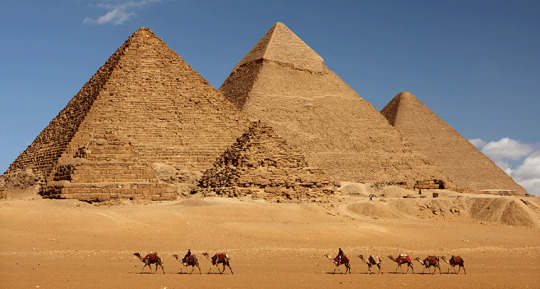

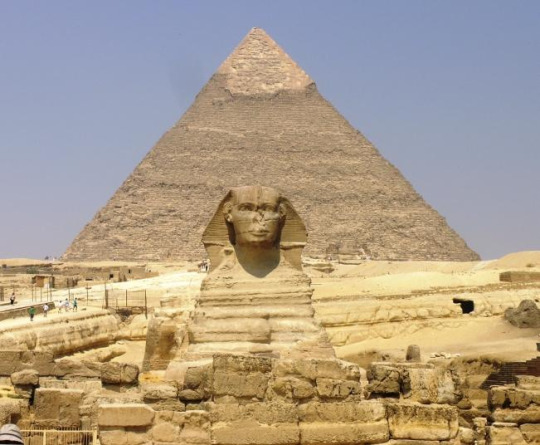
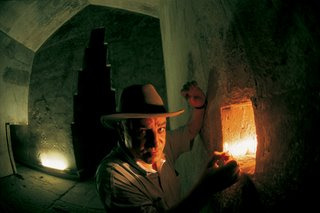
Though Zahi Hawass is obviously in collusion with some sort of conspiracy involving hidden knowledge about the Sphinx, the pyramids, mono-atomic gold, and 6th-dimensional Reptilian bloodlines, Gantenbrink's robot provides us with a well-made, extra-keen, eyeball-tingling sneak peek through some secret tunnels within the Great Pyramid.



It goes a little further and gets more detailed than the video from a few years ago. The last thing we see is a mysterious door adorned with two copper pins and a dark hole that makes us mad with curiosity to see within.

But now the big news: the robot has looked through the hole and found some never-before-seen hieroglyphics--which may help explain the strange door and pins.
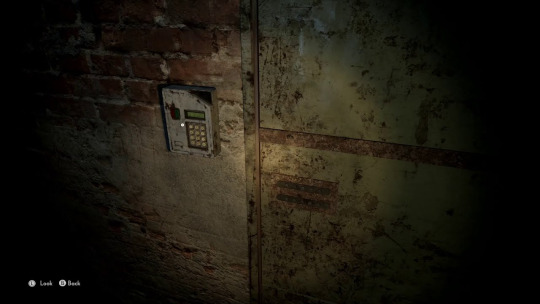
Some think the pyramid is a power generator or an oscillator that resonates in harmony with certain of the earth's vibrations to avert future asteroid/volcanic/Planet Nibiru/electromagnetic disasters.
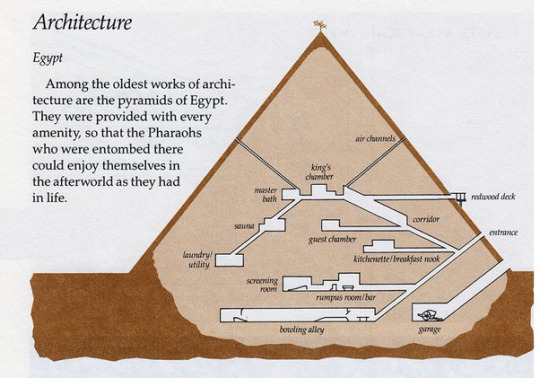


Or is it like a Gothic cathedral, an architectural energy enhancement that helps persuade our consciousness to expand?





Or perhaps the glyphs will translate as something like:
"If you lived here you'd be home now"?
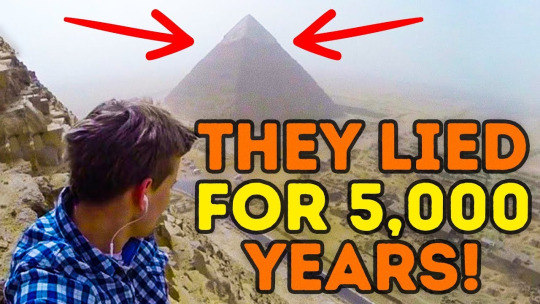

youtube
#Youtube#ancient egypt#the pyramids#zahi hawass#gantenbrink's robot#great pyramid#giza#hieroglyphics
1 note
·
View note
Text
Why do old sketches and photographs of the sphinx show a hole in its head leading into a chamber below? What is hidden beneath the unexcavated giant mound that sits parallel to the sphinx – could there be another? Why does Zahi Hawass deny there are chambers and tunnels beneath the sphinx, when photographic evidence shows him exploring these very chambers? According to historians Malcolm Hutton and Gerry Cannon, there is a monumental cover up taking place.
#ancient#egypt#Egyptian#secret#hidden#chamber#Sphinx#pyramids#Giza#Zahi Hawass#history#ancient origins#archaeology
77 notes
·
View notes